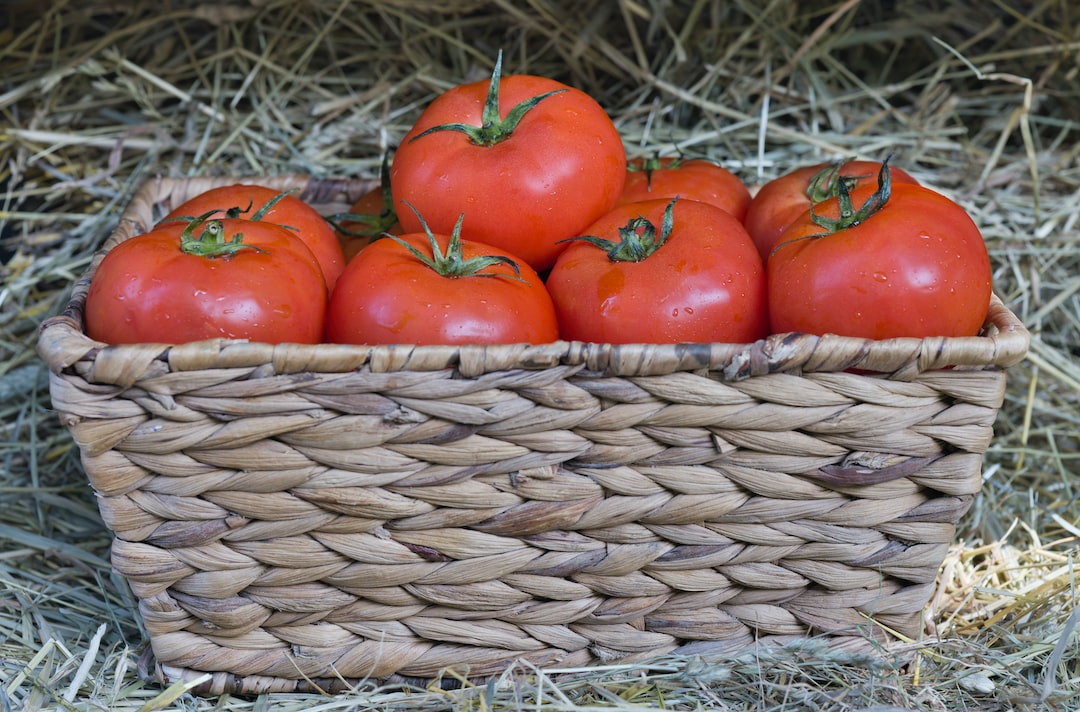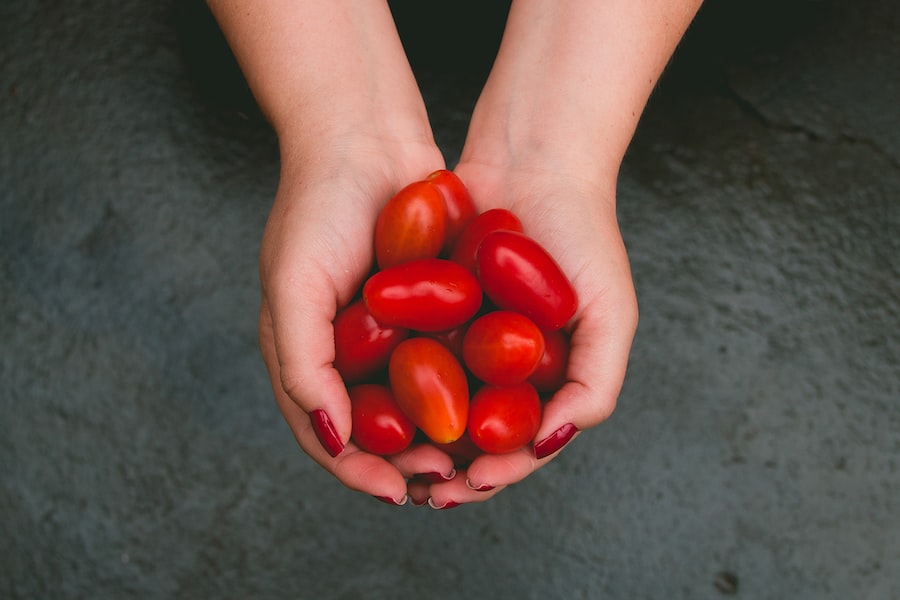Understanding the Difference: Indeterminate vs Determinate Tomatoes

Tomatoes are one of the most popular and widely grown vegetables in home gardens. There are two main types of tomatoes: indeterminate and determinate. Understanding the differences between these two types is important for successful tomato gardening.
Indeterminate tomatoes are known for their vining growth habit, which means they continue to grow and produce fruit throughout the growing season until they are killed by frost. Determinate tomatoes, on the other hand, have a bushy growth habit and produce a finite number of fruit before they stop growing.
Key Takeaways
- Indeterminate tomatoes grow continuously and require staking or trellising for support.
- Determinate tomatoes have a predetermined size and stop growing once they reach maturity.
- Indeterminate tomatoes produce fruit throughout the growing season.
- Determinate tomatoes produce a large crop of fruit all at once.
- Choosing the right tomato variety depends on your gardening goals and available space.
Understanding the Growth Habits of Indeterminate Tomatoes
Indeterminate tomatoes are characterized by their continuous growth and development throughout the growing season. They have a vining growth habit, which means they require support such as stakes or trellises to keep them upright. Indeterminate tomatoes can grow quite tall, often reaching heights of 6 to 10 feet or more.
Examples of popular indeterminate tomato varieties include ‘Brandywine’, ‘Cherokee Purple’, and ‘Sun Gold’. These varieties are known for their excellent flavor and large fruit size. Indeterminate tomatoes are often favored by gardeners who have ample space and want a continuous supply of fresh tomatoes throughout the season.
Understanding the Growth Habits of Determinate Tomatoes
Determinate tomatoes, also known as bush tomatoes, have a more compact growth habit compared to indeterminate varieties. They grow to a predetermined size and produce a set number of fruit before they stop growing. Determinate tomatoes do not require as much support as indeterminate varieties, as their bushy growth habit allows them to support themselves.
Examples of popular determinate tomato varieties include ‘Roma’, ‘Celebrity’, and ‘Better Bush’. These varieties are known for their high yields and early maturity. Determinate tomatoes are often favored by gardeners with limited space or those who prefer to harvest a large crop all at once for canning or preserving.
Differences in Plant Size and Structure
| Plant Species | Average Height (cm) | Leaf Shape | Stem Type |
|---|---|---|---|
| Rose | 60 | Compound | Woody |
| Sunflower | 180 | Simple | Herbaceous |
| Bamboo | 1200 | Compound | Woody |
| Cactus | 30 | Simple | Succulent |
One of the key differences between indeterminate and determinate tomatoes is their size and structure. Indeterminate tomatoes can grow quite tall, often reaching heights of 6 to 10 feet or more. They require support such as stakes or trellises to keep them upright. The vines of indeterminate tomatoes continue to grow and produce fruit throughout the growing season.
Determinate tomatoes, on the other hand, have a more compact growth habit and do not require as much support. They typically grow to a predetermined size, usually around 3 to 4 feet tall. The bushy growth habit of determinate tomatoes allows them to support themselves without the need for additional support.
The size and structure of indeterminate and determinate tomato plants affect their growth and care. Indeterminate tomatoes require regular pruning and training to keep them upright and prevent them from becoming tangled. Determinate tomatoes, on the other hand, require less maintenance as their compact growth habit naturally keeps them in check.
Differences in Fruit Production
Another important difference between indeterminate and determinate tomatoes is their fruit production. Indeterminate tomatoes produce fruit continuously throughout the growing season until they are killed by frost. This means that you can harvest ripe tomatoes from indeterminate plants over an extended period of time.
Determinate tomatoes, on the other hand, produce a finite number of fruit before they stop growing. This means that you will have a large crop of ripe tomatoes all at once, which is ideal for canning or preserving. However, once the fruit has been harvested, there will be no more tomatoes for the rest of the season.
The difference in fruit production between indeterminate and determinate tomatoes affects their yield and harvest. Indeterminate tomatoes may produce fewer fruit at any given time compared to determinate varieties, but their continuous production means that you can enjoy fresh tomatoes throughout the season. Determinate tomatoes, on the other hand, offer a large harvest all at once, which can be beneficial for those who want to preserve or can their tomatoes.
Differences in Harvest Time

The harvest time of indeterminate and determinate tomatoes also differs. Indeterminate tomatoes have a longer harvest period, as they continue to produce fruit throughout the growing season until they are killed by frost. This means that you can enjoy fresh tomatoes from indeterminate plants for a longer period of time.
Determinate tomatoes, on the other hand, have a shorter harvest period. They produce a large crop of ripe tomatoes all at once, usually within a few weeks. This concentrated harvest can be advantageous for those who want to preserve or can their tomatoes, as it allows for efficient processing.
The difference in harvest time between indeterminate and determinate tomatoes affects their use in the kitchen. Indeterminate tomatoes are ideal for fresh eating, as you can harvest ripe fruit as needed throughout the season. Determinate tomatoes, on the other hand, are well-suited for preserving or canning, as their concentrated harvest allows for efficient processing.
Pros and Cons of Indeterminate Tomatoes
There are several advantages to growing indeterminate tomatoes. One of the main benefits is their continuous fruit production throughout the growing season. This means that you can enjoy fresh tomatoes over an extended period of time. Indeterminate tomatoes also tend to have larger fruit size and better flavor compared to determinate varieties.
However, there are also some disadvantages to growing indeterminate tomatoes. Their vining growth habit requires support such as stakes or trellises, which can be time-consuming to set up and maintain. Indeterminate tomatoes also require regular pruning and training to keep them upright and prevent them from becoming tangled.
To make the most of the growth habits of indeterminate tomatoes, it is important to provide them with adequate support and space to grow. Staking or trellising indeterminate tomatoes will help keep the plants upright and prevent them from sprawling on the ground. Regular pruning and training will also help maintain the plants’ shape and prevent them from becoming tangled.
Pros and Cons of Determinate Tomatoes
There are several advantages to growing determinate tomatoes. One of the main benefits is their compact growth habit, which makes them well-suited for small gardens or containers. Determinate tomatoes also tend to have a higher yield compared to indeterminate varieties, as they produce a large crop all at once.
However, there are also some disadvantages to growing determinate tomatoes. Their finite fruit production means that once the crop has been harvested, there will be no more tomatoes for the rest of the season. Determinate tomatoes also tend to have smaller fruit size compared to indeterminate varieties.
To make the most of the growth habits of determinate tomatoes, it is important to provide them with adequate space to grow. While they do not require as much support as indeterminate varieties, determinate tomatoes may still benefit from staking or caging to keep the plants upright. Providing them with well-drained soil and regular watering will also help ensure healthy growth and fruit production.
Choosing the Right Tomato Variety for Your Garden
When choosing between indeterminate and determinate tomatoes, there are several factors to consider. One of the main factors is the amount of space you have available in your garden. If you have limited space or are growing tomatoes in containers, determinate varieties may be a better choice due to their compact growth habit.
Another factor to consider is your preferred method of tomato consumption. If you enjoy fresh tomatoes throughout the season, indeterminate varieties are ideal as they provide a continuous supply of ripe fruit. If you prefer to preserve or can your tomatoes, determinate varieties are well-suited as they offer a large harvest all at once.
It is also important to consider your climate and growing conditions. Some tomato varieties are better suited for specific climates or have specific disease resistance. Researching and selecting varieties that are well-suited for your growing conditions will help ensure a successful tomato harvest.
Final Thoughts: Indeterminate vs Determinate Tomatoes
In conclusion, understanding the differences between indeterminate and determinate tomatoes is important for successful tomato gardening. Indeterminate tomatoes have a vining growth habit and produce fruit continuously throughout the growing season. Determinate tomatoes have a bushy growth habit and produce a finite number of fruit before they stop growing.
The size and structure of indeterminate and determinate tomato plants affect their growth and care. Indeterminate tomatoes require support such as stakes or trellises to keep them upright, while determinate tomatoes have a more compact growth habit and do not require as much support.
The fruit production and harvest time of indeterminate and determinate tomatoes also differ. Indeterminate tomatoes produce fruit continuously throughout the season, while determinate tomatoes offer a concentrated harvest all at once.
When choosing between indeterminate and determinate tomatoes, it is important to consider factors such as space availability, preferred method of tomato consumption, and growing conditions. Selecting the right tomato variety for your garden will help ensure a successful and bountiful harvest.



